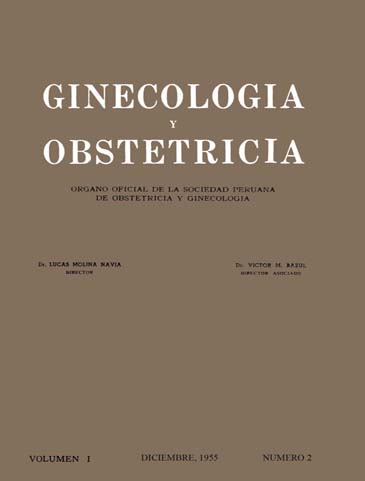Relationship between endometrial hyperplasia and endometrial adenocarcinoma
DOI:
https://doi.org/10.31403/rpgo.v1i896Abstract
Histopathological material considered in this case shows that the endometrial hyperplasia, as a manifestation of a persistent and incontrarrestado estrogen state, plays an important role in the genesis of carcinoma endometria1. The histological images in these circumstances may correspond to a glandular-cystic hyperplasia or adenomatous hyperplasia. The glandular-cystic menacma during the premenopausal and menopause, reflecting endocrine imbalances, endometrial hyperplasia is not important in these periods, but when it is present in postmenopausal acquires significant influence in relation to the development of endometrial carcinoma. Adenomatous hyperplasia evolves during the period of sexual maturity is more important than the glandular-cystic variety, because although it translates as the existence of an endocrine dysfunction and as she is also a reversible lesion, its existence requires greater concern even within this period and in direct relation to the older woman. When it evolves into postmenopause acquires greater significance than the glandular-cystic variety in the genesis of endometrial carcinoma. The study of 26 cases of coexistence of endometrial hyperplasia and adenocarcinema allowed us to establish in 7 of them the simultaneous occurrence of the two varieties of hyperplasia, glandular-cystic adenomatous and adenocarcinoma; in 6 concomitant evolution of adeno-cystic hyperplasia and adenocarcinoma; 6 in other adenomatous hyperplasia and adenocarcinoma and finally in the remaining seven gradual transformation of adeno-cystic hyperplasia in a adenomatous hyperplasia was revealed, and a dual adeno-cystic hyperplasia in a adenomatous hyperplasia and finally, a carcinoma within a varying period of 1-4 years (Table No. 1). If the age of the patients constitute each of these three groups at the time of diagnosis of malignant degeneration was established, they analyzed it is found that the lowest mean age -48 years corresponded to the coexistence of adenomatous hyperplasia and adenocarcinoma. Instead, she was 52 years for the association, cystic glandular hyperplasia, adenomatous hyperplasia and adenocarcinoma and 58 for association glandular-cystic hyperplasia adenocarcinoma. Without wishing to conclusions given the small number of observations call attention to that there is a greater propensity for malignant transformation and it is more established early, when he attends the adenomatous hyperplasia. This statement is confirmed if we set the average age in both groups of adenocarcinomas in which was present this form of hyperplasia in histological images, ensuring that it is 50.5 years in the group of 58 that she does not exist. The above findings lead to an important conclusion regarding endometrial carcinoma prophylaxis in the sense that the existence of endometrial adenomatous hyperplasia, glandular-cystic or in the postmenopausal period would recommend hysterectomy. Radiotherapy general and intrauterine Curietherapy especially since it is the therapeutic method which is used in dysfunctional metrorrhagia climacteric, there could only be reported when an absolute or the refusal of the patient to accept the surgical intervention contraindication. In both circumstances should require periodic checks which necessarily should include cytology and new scrapings-Biopsy. The checks indicated in the conclusion No.4 lead to accept the concept of carcinoma "in situ" of the endometrium, despite some dissenting opinions authorized. Mantenérsele it considered to be effective for daily practice in the lab corresponding images are investigated and thus to accumulate additional information to allow in the future to issue a more informed judgment. It should be reminded that the Committee in Stockholm, without commenting on the characteristics of the carcinoma "in situ" endometrial included as cervical carcinoma in a period 0, defining it as: cases the pathologist believes are most likely to carcinomatous nature although it is not possible to establish a definitive diagnosis in this regard.Downloads
Download data is not yet available.
Downloads
Published
2015-06-12
How to Cite
Wood, J., Durán, A., Fuensalida, S., & Guzmán, A. (2015). Relationship between endometrial hyperplasia and endometrial adenocarcinoma. The Peruvian Journal of Gynecology and Obstetrics, 1(2), 1–13. https://doi.org/10.31403/rpgo.v1i896
Issue
Section
Artículos Originales
















